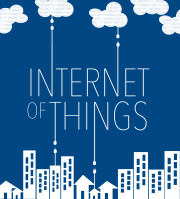This week’s show is all about Microsoft’s new IoT security product, Azure Sphere. Kevin and I start with that, before talking about a new checklist from the Online Trust Alliance explaining how to secure your enterprise IoT gear. We then discuss acquisitions such as Nice buying a 75% stake in home security startup abode, Lutron buying professional lighting company Ketra, and the possibility that Google might acquire Nokia’s health assets. In news bits, we talk about August’s new unlocking powers, Twilio’s new SIM offering, smart pet transport and VMware’s new lab setting for its IoT software. Kevin shares his thoughts on HomeKit sensors from Fibaro and we answer a question about doorbells.

Our guest this week is Galen Hunt from Microsoft, who has been working on the Azure Sphere product for the last four years. He shares why Microsoft attacked IoT security with a hardware, OS and cloud product and shared how far Redmond is willing to go on openness. He also talked about the revenue model, support life and other practical aspects. You’ll walk away from this one a lot smarter.
Hosts: Stacey Higginbotham and Kevin Tofel
Guest: Galen Hunt, partner managing director at Microsoft
Sponsors: Forgerock and Yonomi
Podcast: Play in new window | Download | Embed
Subscribe: RSS
